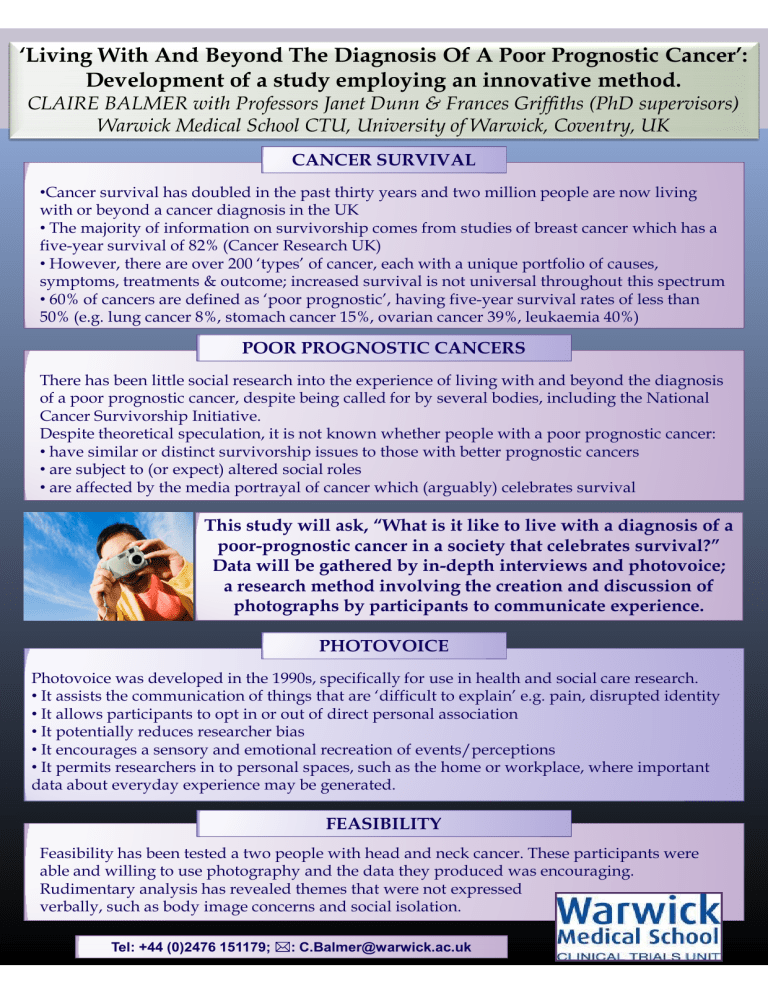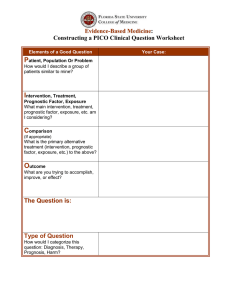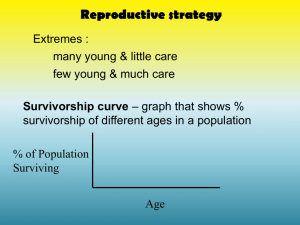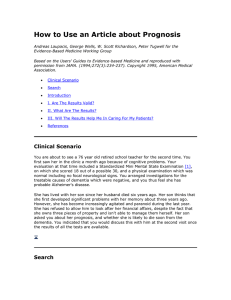‘Living With And Beyond The Diagnosis Of A Poor Prognostic... Development of a study employing an innovative method.

‘Living With And Beyond The Diagnosis Of A Poor Prognostic Cancer’:
Development of a study employing an innovative method.
CLAIRE BALMER with Professors Janet Dunn & Frances Griffiths (PhD supervisors)
Warwick Medical School CTU, University of Warwick, Coventry, UK
CANCER SURVIVAL
• Cancer survival has doubled in the past thirty years and two million people are now living with or beyond a cancer diagnosis in the UK
•
The majority of information on survivorship comes from studies of breast cancer which has a five-year survival of 82% (Cancer Research UK)
•
However, there are over 200 ‘types’ of cancer, each with a unique portfolio of causes, symptoms, treatments & outcome; increased survival is not universal throughout this spectrum
•
60% of cancers are defined as ‘poor prognostic’, having five-year survival rates of less than
50% (e.g. lung cancer 8%, stomach cancer 15%, ovarian cancer 39%, leukaemia 40%)
POOR PROGNOSTIC CANCERS
There has been little social research into the experience of living with and beyond the diagnosis of a poor prognostic cancer, despite being called for by several bodies, including the National
Cancer Survivorship Initiative.
Despite theoretical speculation, it is not known whether people with a poor prognostic cancer:
• have similar or distinct survivorship issues to those with better prognostic cancers
• are subject to (or expect) altered social roles
• are affected by the media portrayal of cancer which (arguably) celebrates survival
This study will ask, “What is it like to live with a diagnosis of a poor-prognostic cancer in a society that celebrates survival?”
Data will be gathered by in-depth interviews and photovoice; a research method involving the creation and discussion of photographs by participants to communicate experience.
PHOTOVOICE
Photovoice was developed in the 1990s, specifically for use in health and social care research.
• It assists the communication of things that are ‘difficult to explain’ e.g. pain, disrupted identity
• It allows participants to opt in or out of direct personal association
•
It potentially reduces researcher bias
• It encourages a sensory and emotional recreation of events/perceptions
•
It permits researchers in to personal spaces, such as the home or workplace, where important data about everyday experience may be generated.
FEASIBILITY
Feasibility has been tested a two people with head and neck cancer. These participants were able and willing to use photography and the data they produced was encouraging.
Rudimentary analysis has revealed themes that were not expressed verbally, such as body image concerns and social isolation.
Tel: +44 (0)2476 151179; : C.Balmer@warwick.ac.uk







